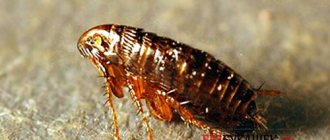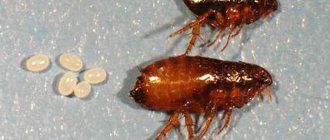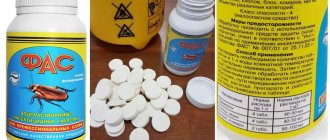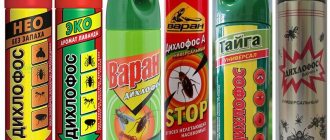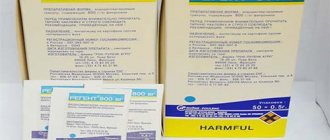How to bathe kittens - this question worries many owners who have just taken an animal into the house. However, not all owners wash their pets, despite the fact that this procedure is very important. When it comes to cats, many are afraid to bathe them because of the possibility of a negative reaction to the water. The owners are afraid of harming the kitten.
When is it necessary to bathe?
Nature has endowed cats with their own hygiene complex. The rough tongue of fluffies does an excellent job of removing dirt and foreign odors from the animal’s coat; it combs the fur, increasing its thermal insulating properties.
To interfere with this natural process means to disrupt the natural protective layer of skin and fur. They bathe a cat only when the animal cannot clean itself up on its own or as part of therapeutic and preventive procedures.
Bathing is necessary:
- In case of heavy contamination: soot, oil, swamp slurry, something foul-smelling.
- If the animal is picked up from the street and it is very dirty, infested with fleas.
- Cats who returned from the street after the “sexual hunt”.
- Hairless breeds of cats - their body produces a lot of skin lubricant, which will emit an unpleasant odor if it is not washed off in time.
- Older animals and obese cats who cannot clean their fur on their own.
- Show class animals that participate in exhibitions.
- Cats with parasitic diseases (fleas), ringworm. In this case, special therapeutic and prophylactic agents are used.
- Long-haired breeds during the molting period. During shedding, more villi enter the cat's stomach - this can cause digestive problems and intestinal blockage. Bathing will wash away dead fibers - the cat will swallow less hair, and the house will be cleaner.
Important!
Remember that cats are not dogs; advice on bathing dogs should not be applied to cats.
This is interesting: How to wash a cat at home
Choosing a Shampoo
Veterinary pharmaceuticals produce a sufficient amount of products intended for the care of cat fur. In addition to the usual liquid varieties, you can use dry powders, sprays, foams and mousses. Products that do not require the use of water are suitable for animals that do not tolerate water treatments well.
Liquid
They are among the most popular among owners of four-legged pets. The convenient consistency speeds up the process - provided that the cat does not resist washing. Liquid pet shampoos have the best characteristics:
- they easily remove greasy deposits;
- get rid of difficult-to-remove contaminants;
- Gives wool shine and silkiness.
The disadvantages of use include the possibility of drying out the skin if washed too often. Among the variety of options, you can choose the perfect one for each pet:
- Api-San Velvet care;
- 8 in 1 Perfect Coat Shed Control and Hairball Shampoo;
- Rolf Club - against ticks and parasites;
- Lugovoy - against parasites and dry skin;
- Doctor ZOO.
Dry
Used for short-haired cats afraid of water during exhibitions. The line includes:
- Tropiclean Dander Reducing;
- Dry Powder Shampoo;
- Perfect Coat Freshening Foam;
- Trixie Trocken Shampoo.
Sprays
They have antistatic effects and are suitable for long-haired cats. After use, they do not require rinsing.
- Waterless Cat Shampoo Spray;
- FURminator - from tangles;
- Doctor VIC for dogs and cats.
Important! This type of grooming product is not suitable for all animals - many are scared by the sound of the aerosol.
Indications for water procedures
Despite the fact that most cats take care of their own hygiene, there are times when bathing becomes a necessary measure. You should only bathe your pet if there is a real reason for this, and the pet cannot cope with it on its own:
- severe wool contamination;
- tangles and difficult-to-comb wool;
- excessive shedding;
- preparation before the exhibition;
- flea and tick treatment;
- an elderly pet does not cope with hygiene;
- as a therapeutic procedure for certain diseases.
Why do kittens wash?
In addition to the question of whether it is possible to bathe a kitten, owners often wonder whether it is necessary to do so. To understand the importance of this procedure, you need to know the reasons why you should bathe an animal:
- First of all, we are talking about appearance. If the kitten is very dirty, it is advisable to wash it to clean the fur. Water treatments help give it shine and make it much softer. Also, after bathing, the original appearance of the coat returns. Water with shampoo washes away dead hairs, which without water treatments would scatter throughout the apartment or house.
- During shedding, a large amount of hair enters the cat's stomach, which disrupts the digestion process. Frequent bathing will help avoid problems associated with the animal's gastrointestinal tract.
- Fight against parasites. You can find special flea shampoos in pet stores and pharmacies. They have a mild effect and effectively help kittens get rid of parasites.
Pets that do not go outside for walks can be bathed once a month. The owner does not need to perform this procedure more often, since the pet independently maintains hygiene by licking the fur.
At what age can you bathe?
When it becomes clear whether a kitten can be washed, you need to figure out other issues. Another important question that many owners ask is at how many months can a kitten be bathed.
People who breed cats advise starting to bathe small kittens at 1 month. However, this is how they care for animals that will be prepared for sale or for exhibitions. A regular pet is allowed to be bathed at 3 months.
However, veterinarians advise you to wait with water procedures until 5–6 months of age. You can start bathing a kitten between one month and six months from birth.
It is important to remember that you should not delay with water procedures. It is easier to train an animal at an early age than to try to force an adult cat to wash itself. Knowing when you can bathe your kitten, it is easy to avoid problems associated with its health.
At what age can you bathe a kitten?
A healthy kitten's first bath should occur no earlier than 4-5 months of age, when its baby teeth fall out.
At this age, babies experience stress from contact with water more easily, and they have already been weaned from their mother.
Bathing newborn kittens is unnecessary and harmful. Firstly, up to 1-3 months they are looked after by their mother; the cat’s rough tongue and saliva clean the kittens’ fur better than detergents. Bathing at an early age will wash away the natural postpartum lubricant that protects the baby from various infections.
Water procedures with shampoo or soap will kill the baby’s own smell - the mother cat may refuse him, stop feeding him, or even suffocate him. The third argument against early bathing is that newborn kittens have poor heat exchange, they can freeze after water procedures and catch a cold.
The only reason you might want to give your kitten a bath at an earlier age is if there is a flea infestation. Newborn kittens are not suitable for parasite treatments for adult animals. Bathing with antiparasitic shampoo is the only possible way to treat kittens from 1 month
It is important to choose a brand of shampoo that is approved for babies
10 days must pass after castration.
If you notice signs of lichen in your purr, the veterinarian has prescribed proper treatment, then he should warn that swimming with lichen is not prohibited, but is even recommended. But, since this procedure is therapeutic and is carried out with special means, we will talk about it in another article.
ATTENTION, TEST! Answer a few simple questions and find out what kind of owner you are for your cat:
Does your cat have a name?
How often do you play with your pet?
Do you get your vaccinations and parasite treatment up to date?
Is your kitten spayed/neutered?
What do you feed your purr?
What kind of owner are you for your cat?
Your kitty is very happy
Congratulations! Your purr is healthy and happy, surrounded by care and love. You are a responsible and good owner for your kitty.
Your pussy could be happier
Hmm... with such an owner, even the cockroaches will all die. Maybe you should have gotten a cactus instead of a cat? Yes, you are not the best and most caring owner, but you still have a chance to fix everything. Start taking proper care of your pet.
There is no general consensus on how many times a pet should be bathed per year. When using shampoo, recommendations for the number of times it should be used will be indicated on the packaging.
Should I bathe a kitten?
Kittens from reliable nurseries or those who have simply been close to their mother for up to three months do not need bathing. The cat took excellent care of them and, from the point of view of the cat world, they are clean. An orphan kitten, having received a real home and owners as a reward, must still undergo a full range of bath procedures.
The sooner you start teaching your baby to bathe, the less stress both he and the owners will experience. The optimal age to start taking water procedures is three months. Before this, it is better to wipe your pet with a damp cloth. In addition, the kitten must get used to the new owners and begin to trust them. Only after establishing friendly connections can you go on the first “swim”.
A pet that can only see the street from the window should not be bathed often. It is enough to wipe his paws and fur with a damp cloth. But a thorough cleaning of wool should be done every season:
- in summer and spring - at the beginning and at the end;
- in winter and autumn - once.
A pet that likes to chase sparrows in the yard or periodically disappears for procreation needs bathing much more often. A “bath day” should be organized according to contamination and treatment for parasites.
Foundlings are usually bathed immediately upon arrival home
Indeed, sometimes it is not possible to wait until a trusting relationship with a pet is established. One day I picked up a kitten on the street. He came out to me right from behind the trash can, and part of his face and ears were stained with paint (the kind that is used to paint fences and benches in parks). Naturally, the baby’s acquaintance with the house began in the bathroom, where he was not just washed, but given a thorough bath with flea shampoo.
How to bathe a cat at home?
Bathing a cat can be comfortable if you follow some rules. First, find yourself a partner. A cat is a small creature, but bathing it with four hands is more convenient. One holds the animal, and the second carries out manipulations.
Next, step-by-step instructions on how to properly bathe a cat at home .
Before you bring your pet into the bathroom, prepare everything you need.
List of what you will need:
- medium-sized shallow basin;
- a saucepan with warm water;
- ladle;
- cotton wool;
- sponge;
- brush;
- detergents;
- a set of terry towels;
- hair dryer;
- delicacy;
- rubber gloves (we reserve this item for those animals that fundamentally do not submit to the “humiliating” need to be clean by force and tear their owners’ hands to shreds with their claws);
- nail clipper
Step 1: Prudent.
Combine business with pleasure and trim your pet's nails. You remember that this needs to be done from time to time? This procedure before bathing is also intended to once again protect you from the wrath of your pet. However, there are radical methods for permanently declawing a cat, but we are not talking about extreme measures now.
Step 2. Preliminary.
Pour water into a bowl and into a saucepan. At what temperature should you bathe a cat? Considering that a cat’s body temperature is higher than that of a person, a water temperature of 30-38 degrees will be comfortable for it. But bathing in a large bathtub cannot be called comfortable for a cat, since huge expanses of water will plunge the cat into panic. A bowl of warm water is sufficient for cat procedures. Bring towels into the bathroom in advance and open bottles of detergent.
Step 3: Discreet.
Plug the animal's ears with cotton swabs to prevent water from entering. And only after that bring the cat into the bathroom.
Step 4. Extreme (as well as all subsequent steps).
How to bathe a kitten if it panics? In cold blood! Talk to him in a calm voice, showing that you are the boss of this flock and know what you are doing.
Don’t put the baby in a bowl of water right away, just wet the woolen coat as much as possible with a sponge soaked in water, trying not to scare the cat with random noise. This is why we recommended pouring water in advance.
Then you should take the detergent and rub it into the fur slowly, carefully, with massaging movements. Is it worth reminding us that we try not to get the cat’s head wet at all?
Step 5.
Use a brush to very carefully remove the resulting foam and then place the cat in the basin, pouring water from the ladle over it. If there is not enough water, then you will need an additional portion, poured into the saucepan in advance. The cat will be calmer in the basin if there is something there that he can grab onto with his claws. Some owners put the animal directly into a bowl of water, some put it in an empty basin - you can only choose your option experimentally.
The eyes and ears (outside) can be wiped with a damp hand.
Step 6.
Finally, we wrap the cat in a towel and try to hold it so that the wet animal in the wild does not become hypothermic. Rubbing with a towel is harmful to the coat, so we only blot the moisture, changing towels as needed.
Step 7
The next step is blow drying. We hold the scary and buzzing device at a distance of 30 cm from the animal’s body. Some experts convince that only long-haired cats should be blow-dried, but it seems to us that to prevent colds, it is better not to pay attention to the length of the coat, because the cat itself takes a long time to dry. If you leave a cat in a warm room after bathing, it will dry completely only after 12 hours!
Step 8
We comb out the fur with special combs and brushes, thus finally removing dead hair.
Step 9
We motivate the dried and combed cat with a treat, so that next time bathing will be associated only with pleasant moments.
This is interesting: How to rid a cat of fleas?
How to properly wash cats
Before you start swimming, you should carefully prepare:
- examine the cat, it should be healthy;
- the day before bathing, the cat must be combed so that the hair does not get tangled during bathing;
- vacate the room, remove all foreign objects;
- prepare 2 towels, shampoo and other bathing products;
- close all windows, eliminate drafts;
- there should be no loud sounds or noise (for example, a TV or speakers operating nearby);
- adjust the water temperature, the optimal option is 37-40 degrees;
- take some water into a basin or bathtub;
- You can lay a rubber mat or towel on the bottom of the bath to prevent the cat from sliding along the bottom;
- Dilute the shampoo with water in a small container, this will make application easier.
To make the bathing process easier, you can use a special cat washing net. It limits the cat's movement and helps avoid scratches.
After everything is prepared, you can proceed to water procedures. If bathing is the first time for a cat, then it is better to wash the cat together. One person holds the cat by the back and paws, the second person carries out the procedure.
The cat must be placed in the bathroom. Use massaging movements to wet her fur.
At the same time, it is important to ensure that water does not flow into her ears, and also does not get into her eyes and nose. Then you should apply shampoo to the coat. If you first dilute it with water in a glass, this will make application much easier.
Shake and rub in the shampoo using massaging movements. Wash the paws and belly especially thoroughly. Rinse off the shampoo with water. It is important to rinse the wool thoroughly so that not a drop of product remains. Otherwise, when licking, the shampoo may get into the stomach, which will negatively affect the cat’s health. Wool absorbs a lot of water. Therefore, before pulling the cat out, you can squeeze out the fur a little. Wrap the cat in a towel and pat dry the fur. Then take a second dry towel and wrap the cat.
If the cat hasn't shown much concern all the time, you can try drying the fur with a hairdryer. The air should not be too hot or cold. The temperature for drying should be selected in advance.
How to wash a cat if she is afraid of water or bathes for the first time
What could be worse than bathing for a cat? The only thing scarier is swimming for the first time. Unusual surroundings, sounds, sensations, the procedure itself - all this is a lot of stress. Therefore, a cat can break out, bite and scratch, even if such behavior is unusual for it.
The first bath is best done together. One person holds the cat, the second one washes it. This way you can not only protect yourself, but also wash much faster.
While bathing, you need to talk to your cat in a calm and gentle voice, call him by his nickname, and praise him. After water treatments, it is not advisable to dry your cat with a hairdryer. The sound of a hair dryer can frighten the animal even more. At the end, be sure to give your cat a treat and praise her.
When not to bathe a cat
Bathing a cat is not always a safe procedure. You can wash your pet only if it is completely healthy. A sick animal must first be shown to a veterinarian.
When should you not wash your cat?
- immediately after sleep;
- a hungry cat or immediately after eating;
- after vaccination;
- after sterilization or castration;
- in the first days in a new place;
- kittens up to 4 months;
- if the cat is nervous or stressed;
- for various diseases (you should first show the cat to the veterinarian).
Bathing a cat is not as scary and dangerous a procedure as it might seem at first glance. The main thing is to adhere to the rules for caring for and maintaining a cat, as well as regularly observe the rules of hygiene. In this case, a healthy and active cat will delight the owner and all family members for a long time.
Water procedures: economy option
It happens that there is no need to bathe the whole pet, but only certain parts of the body need to be tidied up. Here's how to do it:
- ears are cleaned with cotton pads and a special ear lotion;
- the muzzle - with cotton pads, and the chin - with zoo shampoo;
- butt - with wet wipes;
- nose - with a paper napkin;
- paws (after using the toilet or walking) - with water in the washbasin;
- eyes - with wet disks, and if they are watery - with cotton wool dipped in freshly brewed tea.
Suitable age
At one month old or even earlier, you cannot bathe a kitten, as this process can disrupt the temperature regime and wash away the fatty film from the baby’s skin, thereby opening access to dangerous bacteria. At this age, his mother's way of washing is enough for him. Mother cat carefully licks her offspring, which ensures their hygiene. After one month of age, the kitten can be bathed very carefully only after it has completely gotten used to its owners and apartment and is not afraid of anything. By this time he will already get stronger and learn to lick himself.
If a very young pet gets dirty and has not yet learned how to lick itself properly, then it is recommended to clean the dirty areas of the fur with a damp cloth, without exposing the baby to the stress of bathing.
Usually, kittens are not given away immediately after birth, new owners are found for them at the age of 2-2.5 months, until this moment they are under the care of their mother cat, and when they are moved to a new home, they can begin to be bathed. The most favorable age is 3 months. Just at this age, the kitten’s body becomes strong and will be able to endure the bathing procedure without colds or other complications. If the kitten is vaccinated, then bathing is possible no earlier than 2 weeks after vaccination.
If everything is clear with the owner’s kittens, then with the homeless the situation is different. It is important to immediately take the foundling to a veterinarian for a preliminary examination and tests, and if a specialist recommends bathing the kitten without waiting until it is 3 months old, then this is what you should do. In this case, washing an animal is not just a hygienic procedure, but a way to treat fur from fleas, fungi and other parasites.
Kitten health
Once you get a kitten, start listening to word of mouth
After all, it is very important to find YOUR veterinarian! Based on the advice of friends or reviews on the Internet, it will not be difficult for you to do this. At your first meeting, ask your future family doctor about nutritional recommendations, options for fighting parasites, the first signs of disease, and get a schedule of vaccinations and visits to the veterinarian
Deworming a kitten
About 7 days before the first vaccination you need to do deworming. Subsequently, kittens undergo this procedure every three months until one year. It is optimal to use broad-spectrum drugs for the prevention of parasites.
Flea control
Fleas are no joke. It’s especially not funny for the little ones who have these parasites. They cause itching, allergies, dermatitis, lead to exhaustion and the development of blood diseases! Have we scared you? Anti-flea products come in five types: drops, sprays, shampoos, collars, tablets. Do not rely on your choice if your pet is still very young, but consult your veterinarian.
Vaccination
IMPORTANT! It is necessary to vaccinate both animals that live in the yard and those that do not leave the apartment. Both the first and second can get sick equally, so it’s better to be safe
Kittens are vaccinated for the first time at the age of 8-9 weeks. In this case, vaccinations that do not contain the rabies virus are used.
Revaccination is carried out when the kitten is 12 weeks old. This complex vaccine already contains the rabies virus.
The next revaccination takes place once a year and then once every year.
The scheme may change slightly. Your veterinarian will suggest the best one.
The advisability of bathing
Cats are very clean animals. They devote several hours every day to thorough licking. With the help of a rough tongue, pets are able to remove almost any dirt, as well as lost hair and skin flakes.
This desire for cleanliness has practical implications. Cats try to neutralize their own scent in order to sneak up on their prey unnoticed during the hunt.
Fear of water can also be explained. A wet pet quickly becomes hypothermic because it loses its ability to thermoregulate. Domestic cats living in “greenhouse” conditions have a rather weak immune system, which is not always able to withstand adverse factors.
If you bathe a kitten with an aggressive shampoo, the protective lubricant will disappear. Because of this, the fur becomes dry and brittle, and the skin begins to peel. Therefore, only special cosmetics are used for washing.
The kitten needs to be bathed when the following signs appear:
- the wool smells unpleasant;
- skin becomes sticky;
- abundant fatty deposits appear;
- the kitten has fleas;
- Dirt accumulates in the folds of the skin.
Cats are bathed if they are very dirty. For example, in any chemicals, soot, oil. In this case, licking the fur will cause serious harm to the health of the pet.
Contraindications to bath procedures
Before introducing your kitten to water, study the list of restrictions for this procedure.
Age
While the kitten's sebum glands are developing, it should not be bathed. An animal deprived of skin lubricant during the washing process becomes susceptible to dermatitis and other skin problems. As mentioned, wait until three months of age.
Vaccination
You cannot wash the animal after vaccination. Even people from school remember that getting the injection site wet is prohibited. The vaccination is performed only on a healthy animal, and during the first bath the kitten may catch a cold and get sick. Coupled with vaccination, the disease can cause serious consequences, including death.
Disease
If your kitten is sick, be sure to consult your veterinarian about the possibility of bathing. Most likely, all bath procedures will be prohibited during this period.
How to bathe at 2 months or more?
At the age of 2 months, it is better to wash the kitten without using shampoo using regular warm water. From 3-4 months you can start bathing with a special shampoo, which will determine the pet’s entire future attitude towards this procedure.
It is important to remember that kittens also have allergies and intolerances, so it is worth monitoring their condition after washing. If your pet shows signs of illness, you should immediately visit a veterinary clinic or listen to the doctor’s recommendations over the phone.
Features of bathing small sphinxes
It’s clear how to bathe an ordinary kitten. However, when it comes to other breeds, a person may become confused. You need to wash hairless Sphynx kittens according to the method presented above. But after the procedure, you need to cover his body with baby cream.
You need to start accustoming cats to water procedures from childhood. While the kitten is small, you can try and instill in him a positive attitude towards water. The most important thing is not to scare him during the first bath and not to cause him pain.
Features of washing hairless cats
Cat litter: which options are best to choose
How to bathe a Sphynx kitten and how often should it be done? The fact is that hairless cats get dirty faster than their brothers in fur coats, so they will need bathing much more often. In addition, hairless breeds of cats sweat much more, and a lot of different debris can accumulate in their folds in the form of leftover food, litter, and lint.
It’s difficult to say for sure how many times a month to bathe a hairless pet. On average, this happens every 2-4 weeks, it all depends on its color and degree of contamination.
Bathing hairless cats has its own distinctive features
Typically, the following signs are a signal for water treatments in hairless cats:
- an unpleasant odor began to emanate from the pet;
- the baby's skin has become sticky and oily;
- Dirt is clearly visible in the folds of the skin.
But washing a bald baby too often will also not do him any good, since the special lubricant produced by the sebaceous glands is washed off, and the kitten is thus deprived of natural protection against various pathogens.
Important! Hairless cats are prone to rapid hypothermia after water treatments.
In general, the procedure for the first bath of an ordinary kitten and a small sphinx is not very different. The only difference is that you need to wash a hairless baby with a special soft sponge, carefully treating the fold areas, and use a special shampoo for cats without hair.
At the end of the water procedures, the kitten’s face, ears and back of the head are wiped with special sanitary napkins.
Step-by-step procedure for bathing a kitten
The water procedure must be made as comfortable as possible, because the kitten can be very frightened and in the future the bath will be associated with stress in the animal.
- Step 1. Choose a bathing container: basin, sink, bathtub. The most important thing is that the surface should not be slippery. You can lay a towel or rubber mat.
- Water level. The water should reach the neck, covering the entire body of the animal.
- Comfortable water temperature – up to 40°C.
- Do not make sudden movements or make loud noises.
- Observe the animal’s condition: does the kitten have stress or severe anxiety?
- The room should not be drafty or too hot.
- Step 2. Wet the animal's body, then distribute the shampoo evenly, rubbing in with gentle massage movements. If possible, allow the animal to soak in the shampoo for a few minutes.
- Don't forget to wash the areas at the top of the tail, under the tail, behind the ears, and paws.
- Step 3. It is better to rinse off under low pressure of water. Strong jets can frighten a kitten.
- Step 4. It is better to wet the muzzle with your hands or a sponge.
- Avoid contact of detergents with eyes, ears and mouth. Water getting into the ears can lead to otitis media.
REFERENCE . Otitis is an inflammation of the external auditory canal. Due to excessive moisture, bacteria or fungi begin to multiply in the ear. After bathing, the ears can be cleaned with veterinary lotion, thereby removing excess moisture, if any.
- Step 5. After bathing the kitten, dry it thoroughly with a towel and wrap it in another dry towel. Gradually get used to blow-drying: from the tail, gradually reaching the neck and muzzle.
- Step 6. During the drying process, you need to comb the wool. If there is a tangle, carefully cut it off with scissors.
- Make sure all shampoo or conditioner has been removed from the surface of the animal's body.
ATTENTION . The drug remaining on the skin after swimming can cause poisoning.
Video on how to bathe a kitten and dry it after bathing:
How to bathe correctly for the first time
It is important to wash the kitten correctly the first time so that he is not afraid of this procedure in the future. Knowing how to bathe your pet correctly, you can not only develop a healthy habit, but also prevent health problems. Stages of the procedure:
- Initially, you need to prepare shampoo, a towel, a rubber mat, and a basin. If the owner does not have a large bathtub, a stool may be needed.
- Before bathing the kitten, you can let him sniff all the prepared objects so that he does not feel afraid of new things.
- The basin can be placed in the bathtub if it is large, or placed on a stool. To prevent it from falling, you can place a rubber mat underneath.
- Turn on a warm shower. It is necessary to choose a temperature above average. This is due to the fact that cats’ body temperature is higher than that of humans and the water will seem cooler to them.
- Crumple two balls of cotton wool, soak them in vegetable oil and cover your pet’s ears to protect them from water.
- It is necessary to hold the kitten by the withers and place it in a bowl of warm water. There should be no more than 2–3 cm of liquid.
- Starting from the neck area, wet the cat's fur, moving lower and lower. Apply shampoo.
- Rinse off the foam with water and wrap your pet in a towel.
Inventory
Try to avoid bathing the kitten in the bath itself. A large space filled with water will cause stress and panic in the baby. To feel more protected, it is important for a pet to cling to something, but this is impossible to do in the bath.
Therefore, it is recommended to use a basin to wash the kitten.
A sink is also not suitable for these purposes. Firstly, this is dangerous for the kitten, because it will struggle and may fall from a great height, and secondly, it is inconvenient for the owners: splashes will fall on the walls and floor, the owner may slip, and then labor-intensive cleaning of the bathroom awaits him rooms.
To prevent the cat child from running away, it is recommended to attach it to a harness.
In addition, for stubborn kittens, you can purchase a special synthetic bathing bag.
It looks like a large mesh with a special cord that is fixed around the neck. This bag securely holds the pet and protects its owner from sharp claws and teeth. Water and shampoo penetrate well through the mesh cells. This attribute can also be used for other procedures that are unpleasant for the cat, for example, when trimming claws or cleaning ears.
During the bathing process, it is very important not to wet the kitten’s head and carefully avoid getting water into the ears. To do this, you can use cotton pads or purchase a swimming cap. You don’t need a washcloth to wash your animal; washing off dirt from a cat’s coat with your hands is easier, faster and better. In addition, the kitten may be frightened by a foreign object, but it is probably already accustomed to human hands.
Selection of hygiene products
Never wash your kitten with human shampoo, even if it is a hypoallergenic baby shampoo. Also, detergents made for puppies, dogs, ferrets and other animals are not suitable for kittens. You should also avoid using shampoos for adult cats . In babies, the mucous membranes and skin are more susceptible; they may not withstand the effects of the components of the product for adult animals.
Thus, it is important to purchase a special product for washing your kitten.
The following varieties are suitable.
Universal liquid shampoo
A reliable, convenient product that foams well. For one session you will need a very small portion. The fur of a washed animal is shiny and soft and silky to the touch.
Dry shampoo
Suitable for pets who are terrified of water. Such products have nothing to do with the bathing procedure. Spray in the form of powder is applied to dry fur, which is immediately combed out. The faded hairs remain on the comb along with the dirt.
Recommended for animals older than 3 months.
Spray
Apply to the kitten's damp fur. The advantage is that it practically does not dry out the skin, which is important for kittens under six months of age.
Special shampoo
More often offered as options for a specific breed or for animals with a specific coat type, for example, for long-haired kittens, for British breed kittens, etc.
It is recommended to choose just such an individual product, since the composition of shampoo for Sphynx and Siberian cats will vary significantly and, if replaced, will not bring the desired effect.
Special shampoos for kittens are expensive. To save on product, take small bottles, since kittens grow quite quickly, and a small bottle will be enough for your pet’s entire childhood.
Don't pass by domestic products. In terms of quality, it is in many ways not inferior to goods from foreign manufacturers, and the price is much cheaper.



